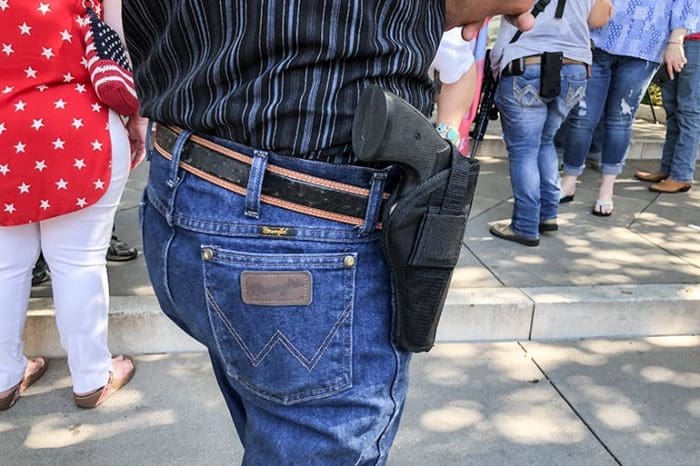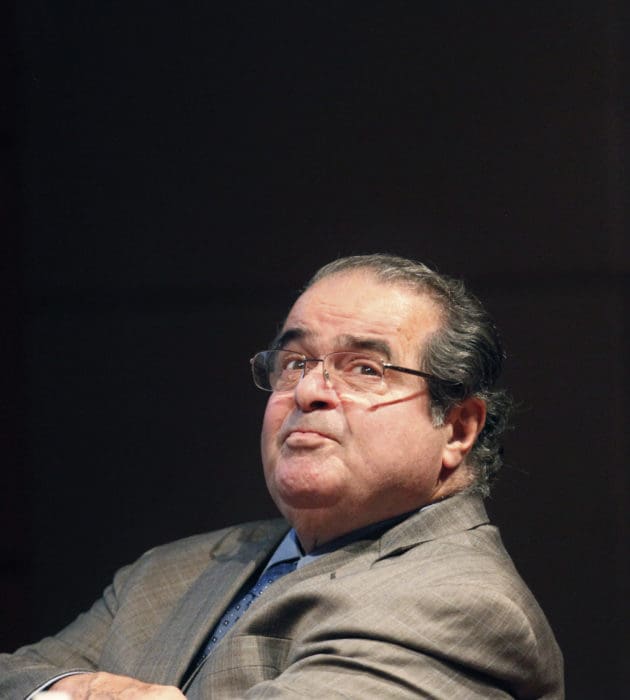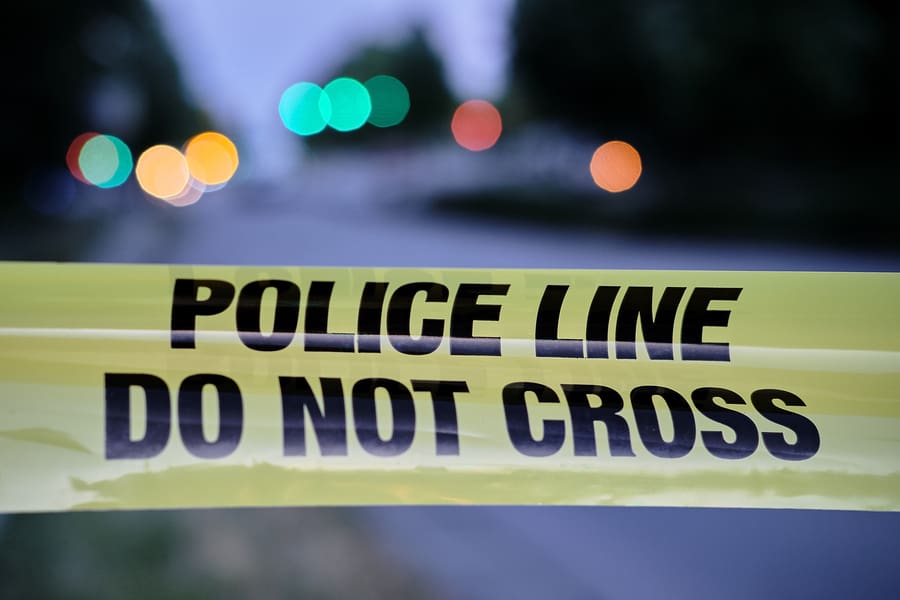Gun rights at the Supreme Court: Justices will consider if the fundamental right to keep a gun at home applies to carrying weapons in public
By Morgan Marietta, University of Massachusetts Lowell
The Supreme Court is set to hear arguments today on a clear question: Does the constitutional right to possess a gun extend outside the home? The answer may alter gun regulations in many states.
The crux of the issue before the court is captured by a debate that Thomas Jefferson had with himself at the time of the founding.
When Jefferson was drafting a proposed constitution for his home state of Virginia in June 1776, he suggested a clause that read “No freeman shall ever be debarred the use of arms.”
In the second draft, he added in brackets, “[within his own lands or tenements].”
Jefferson’s debate with himself captures the question posed to the court: Is the purpose of the right to “keep and bear arms” the protection of a citizen’s “own lands,” or is it self-protection in general? Does the Second Amendment to the U.S. Constitution recognize a right to keep and bear arms in the home, or a right to “keep” firearms in the home and also “bear” them outside of the home for protection in society?
The plaintiffs in the upcoming case New York Rifle & Pistol Association v. Bruen want the court to strike down the state’s restrictions and allow citizens who meet basic requirements, such as having no criminal convictions, to carry concealed weapons.

Gun in the house
There are surprisingly few Supreme Court rulings on the meaning of the Second Amendment.
The question of whether the amendment recognizes a fundamental right – on par with free speech or free exercise of religion – was not decided until 2008 in the landmark ruling in District of Columbia v. Heller. For the first time, the court recognized a clear individual right to bear arms for the purpose of self-defense. This deeply disputed 5-4 ruling was expanded two years later to cover state laws.
The Heller ruling stated that the Second Amendment’s right is like the others in the Bill of Rights, which cannot be violated without the most compelling reasons. The amendment, the ruling says, “surely elevates above all other interests the right of law-abiding, responsible citizens to use arms in defense of hearth and home.” The Washington, D.C., law intended to reduce crime cannot ban firearms in “the home, where the need for defense of self, family, and property is most acute.”
That ruling – written by Justice Antonin Scalia, who died in 2016 and was replaced by Justice Neil Gorsuch – also recognized that “like most rights, the right secured by the Second Amendment is not unlimited.” Scalia cited regulations like “longstanding prohibitions on the possession of firearms by felons and the mentally ill” or “prohibitions on carrying concealed weapons” as “presumptively lawful.”
The principal dissent was written by Justice Stephen Breyer, the only dissenter in Heller still serving on the court. He emphasized the balance between core rights and the needs for public safety.
“If a resident has a handgun in the home that he can use for self-defense,” wrote Breyer, “then he has a handgun in the home that he can use to commit suicide or engage in acts of domestic violence.”
Concealed carry laws
State governments follow very different procedures for determining who will be allowed to carry a concealed firearm outside of the home.
“Open carry,” or just having a handgun in plain sight on a belt holster or carrying a long gun (rifle or shotgun), is actually legal in many places. The general idea is that carrying openly would be done only by an honest actor, so less regulation is needed. “Concealed carry,” having a hidden weapon in a pocket or under a jacket, is far more restricted.
At one end of the continuum are near-bans on what are called “concealed carry licenses,” while at the other end are states in which no license is needed. These laws are referred to as “constitutional carry,” meaning the U.S. Constitution itself is a citizen’s license to carry a firearm.
In between these two positions are rules known as “shall issue,” whereby the government issues a license if the applicant meets the requirements such as having no felony convictions, or “may issue,” which gives the government discretion to deny a license based on perceptions of fitness.
New York state has “may issue” laws with stringent requirements, which in practice allow almost no licenses to be issued. Applicants must demonstrate a “proper cause” – such as being in imminent danger from a known source – which effectively eliminates ordinary applicants.

Regulation or eradication
The strongest argument in the gun owners’ brief to the Supreme Court relates to New York’s insistence that citizens show an exceptional or extraordinary need to exercise a right that the court has recognized as fundamental.
No other fundamental right, such as freedom of speech or religion, is limited to people who can demonstrate special circumstances. Instead, fundamental rights are understood to be held by ordinary people in ordinary circumstances.
The strongest argument in the opposing brief from the New York State Police is federalism – the longstanding conservative argument that state lawmakers hold wide latitude to determine their own regulations to serve as “laboratories of experimentation,” as Justice Louis Brandeis phrased it in 1932. The federalist principle suggests that the court should defer to the judgment of state legislatures representing the needs of local citizens.
As a close observer of the Supreme Court, I can imagine an outcome to the case in which the justices rule that, under the Second Amendment, a state can limit but not eliminate the core purposes of the protected right.
The Heller decision identifies at least one purpose as self-defense. The question is whether a specific concealed carry law creates a burden so strong that it becomes equivalent to eradication of the right to self-protection, or whether it imposes a legitimate public safety regulation that still maintains the core right for citizens who assert it.
Individual rights vs. fellow citizens
The most permissive laws that allow unrestricted concealed carry are almost certainly not mandated by the Constitution.
“Shall issue” laws, which allow states to screen applicants for flaws but compel local governments to provide a concealed carry license to qualified citizens, are likely to be seen even by the conservative justices as legitimate regulations that do not create unconstitutional burdens.
However, the current court might be likely to see a “may issue” law like New York’s, which allows the government to deny a license to nearly every applicant, as creating a burden that blocks the core of the right to self-protection where ordinary citizens are exposed to greater threats – outside the home.
The dissenters will likely focus on Scalia’s invocation of the home as the height of the defensive right, allowing for restrictions outside one’s “own lands,” where individual rights are balanced against the interests of fellow citizens.
Morgan Marietta, Associate Professor of Political Science, University of Massachusetts Lowell
This article is republished from The Conversation under a Creative Commons license. Read the original article.





Unrelated to this but it appears the gop challenger in VA won the election. And it looks like the gop might actually take the governors spot in NJ.
sleepy joe and the cameltoe may actually turn out to be a blessing for the anti fascist right after all.
Its not so much Joe/Toe that’s the problem. Its the SOB behind the curtain pulling the strings.
The problem is that those SOBs behind the curtain are pulling strings on the other side as well. The only issues we really argue about(other than the 2nd) mean nothing to them. Don’t think the GOP is pro 2nd, just because the Dems are not. They feel Gins for me, but not for thee. The globalists want to get rid of it and will not allow us to function as Trump wanted until we fall in line – never!
To whom it may concern….When you fail to define Gun Control by anything other than its History you windup on your knees providing standing and cover for Gun Control…Courts see that, democRats see that, Gun Control Zealots see that…as they all skate on by.giving each other high fives.
Hoping for the best, planning for the worst. Expect the court to nibble around the edge of the Constitutional elephant in the room. They will contort themselves to rule as narrowly as possible so as not to upset the left.
Only a lawyer could take an explicit phrase such as “shall not be infringed” and question it’s meaning
Excellent essay. I would like to discuss the author’s remarks about Jefferson’s proposal: “No freeman shall ever be debarred the use of arms.” In the second draft, he added in brackets, “[within his own lands or tenements].”
We must remember that original meaning is the understanding of the ratifiers, not the author (Madison) nor the editors (House and Senate). What any one of these drafters/editors meant is of little concern relative to the understanding of the ratifiers.
The sentiments of any one individual – even one so prominent as Jefferson – are not dispositive. Moreover, this example illustrates that even so great a mind as Jefferson could be ambivalent, equivocal, with respect to a fundamental principle of right. Each of us has probably held countervailing thoughts on some issue over time and wrestled to identify some satisfactory resolution. Apparently, in one moment, Jefferson thought of constraining the right to arms by the boundaries of the owner’s property line. But this was unlikely to be his final thought on the matter. Even if we supposed he wrote it on his death-bed, what would that (supposed) fact mean to us?
A second point is that few – if any – of our Constitutional rights were always and broadly held to be natural. As but one example, it was once widely held that the religion of the people of a state ought to conform to that of its prince. England had established a single church while maintaining a volatile policy of tolerance/intolerance for other religions. Our 1A settled the question by prohibiting an establishment of religion; initially targeted exclusively at Congress but later incorporated against the states as well.
THIS is the way our system is supposed to work; OUR system can’t work any other way. We make policy on rights by enshrining them in the Constitution.
We should not be surprised to find acts of kings and parliaments regulating – even baring – the use of arms. Government policy would flutter with the winds of political necessity. But again, our 2A was intended to settle the question.
Admittedly, the text of the amendment does not define the right to arms apart from mentioning the practices of “keep[ing]” and “bearing” them. It remains for us today to flesh-out the metes and bounds of this right.
Today, and throughout the remainder of the current term, SCOTUS will grapple with one narrow aspect of defining “bear[ing]”. Is this a hollow promise of a right which NY (et al.) may withhold at pleasure? Or, are all citizens to enjoy this right without arbitrary discrimination?
All the rights in our Constitution come with policy implications. We should not be surprised that we are now debating the wisdom of unfettered speech. Nevertheless, Constitutional measures were ratified with the intention of settling the policy implications – whether for better or for worse – choosing one policy while rejecting others.
The powers of NY State ARE constrained by the 2A, just as they are with respect the 1st, 3rd, 4th, etc. This seems to be the only natural and reasonable interpretation of the facts in Bruen.
Very well articulated, Mark. I would only add that the Founders famously and specifically included the phrase “shall not be infringed”. That means not touched or hindered by the Government in any way.
Please know that Haz will do whatever it takes to defend the Second Amendment, provided that ‘whatever it takes’ is limited to making grandiose posts on a lightly trafficked gun blog from the comfort of his own home (aka the ‘natural kill box’).
Seriously, folks, this dude is a coward. Be wary….
https://www.youtube.com/watch?v=P5iqYuFmzqg
“keep[ing]” and “bearing” were apparently widely understood by even a total dolt of 1800. How it so difficult for the government “educated” person today to understand the same?
….and neiowa knows what it is to be a complete ‘dolt’, believe me!
“Each of us has probably held countervailing thoughts on some issue over time and wrestled to identify some satisfactory resolution.”
as a boy i often thought, “there ought to be a law.”
as a manchild i attempt to avoid this.
Hopefully Roberts won’t screw this up.
But , I can imagine he’ll wet his panties a bit.
We also must remember that Jefferson spoke of freemen as people of property. The man who did not own property couldn’t vote – he was a tradesman, or a laborer, or even a journeyman. He was limited by society and class structure. This changed when the frontier was opened, but those were not really states, so the people that went there had to have guns for protection and hunting.
It needs mentioning that New York’s permit department has a habit of issuing licenses to generous applicants, even those that should be barred.
Want a carry permit?, a Rolex to the issuing officer would really help your case.
How To Double ETH Instantly In 2021
ETHER Double is a fully automated ETHEREUM investment platform operating with no human intervention.
Take full advantage of our fast and legit ETHEREUM doubler platform.
Our automated system gathers information from the blockchain transfers and cryptocurrency exchanges to study and predict the ETHEREUM price.
Our servers open and close thousands of transactions per minute, analyzing the price difference and transaction fees, and use that information to double your ETHEREUMS.
Our data centers are located on multiple locations around the world so that our system has 100% uptime guaranteed.
Visit
https://etherdouble.com
Regards
The problem we have here is that the modern judiciaries, including the SCOTUS, in this Constitutional Republic wrongly perceive the provisions of the U.S. Constitution as malleable (the living Constitution argument). They are NOT! Said provisions are Absolute! Article VI unequivocally dictates that the U.S. Constitution is the “supreme Law” and that “… the Judges in every State shall be bound thereby, any Thing in the Constitution or Laws of any State to the Contrary notwithstanding.” Therefore, laws that are contrary to the edicts therein are notwithstanding in law and Judges are bound to declare them unconstitutional. If they disagree, Article V was provided to amend the “supreme Law”, but that has not been attempted regarding the Second Amendment (2A) for the obvious reason that “We the People” would undoubtedly rise up and slap the government down hard if they came after our “Arms”.
The language contained in the 2A is clear and self-executing – ‘… the right of the people to keep (own) and bear (carry, possess on one’s person) Arms, shall not be infringed.’ Who ‘shall not infringe’ upon it? The government. Where do the people possess this right? Since there is no negative language contained in 2A to prohibit the exercise of this right in specified areas, we obviously possess this right ANYWHERE we choose.
As for the government’s “public safety” argument – in 1989 the SCOTUS ruled the ‘the State has no affirmative duty to protect the public.’ (DeShaney v Winnebago County). That ruling was the result of a mother’s acquisition of a restraining order on her husband who liked beat their son. The father promptly disobeyed the order and beat the child brain-dead. The mother sued the county for not protecting her son and the courts pulled the county’s back-side out of the fire with that ruling. They can’t have it both ways – either the State has the obligation to protect us 24/7 (an impossible notion) or it’s left to us. Logically, LEOS cannot protect us anywhere that they are not, which includes may places in public settings.
If the SCOTUS does its singular sworn duty of interpreting the Constitution, as it is, and thereby rules correctly on this case, they have no other option but to rule on the side of unlimited permit-less carry.
Public safety is construed as including reducing the possibility and severity of injuries resulting from criminal use of firearms. Fewer firearms, goes the argument, the fewer violent encounters involving the use of firearms there will be, and therefore fewer injuries and especially fewer injuries to bystanders and other innocents. This is typically known among the gun cognoscenti as the “blood in the streets” argument dressed up in pretty words. “Everyone knows” that more guns means more gun crime! It’s common sense! In fact, Solicitor General Underwood presented a version of this argument today.
Read the book “To Shake Their Guns in the Tyrant’s Face: Libertarian Political Violence and the Origins of the Militia Movement” available on Amazon: https://www.amazon.com/Shake-Their-Guns-Tyrants-Face/dp/0472034650
This book covers the arguments between Federalists and Anti- Federalists about the Second Amendment leading up to the establishment of the Constitution, as well as covering what the term “militia” means and how and when militias have been exercised over the last 200 years.
tldr; The bottom line is that the Second Amendment is more complicated than many people on both sides of the issue think. Reading US history tends to be depressing.
Comments are closed.